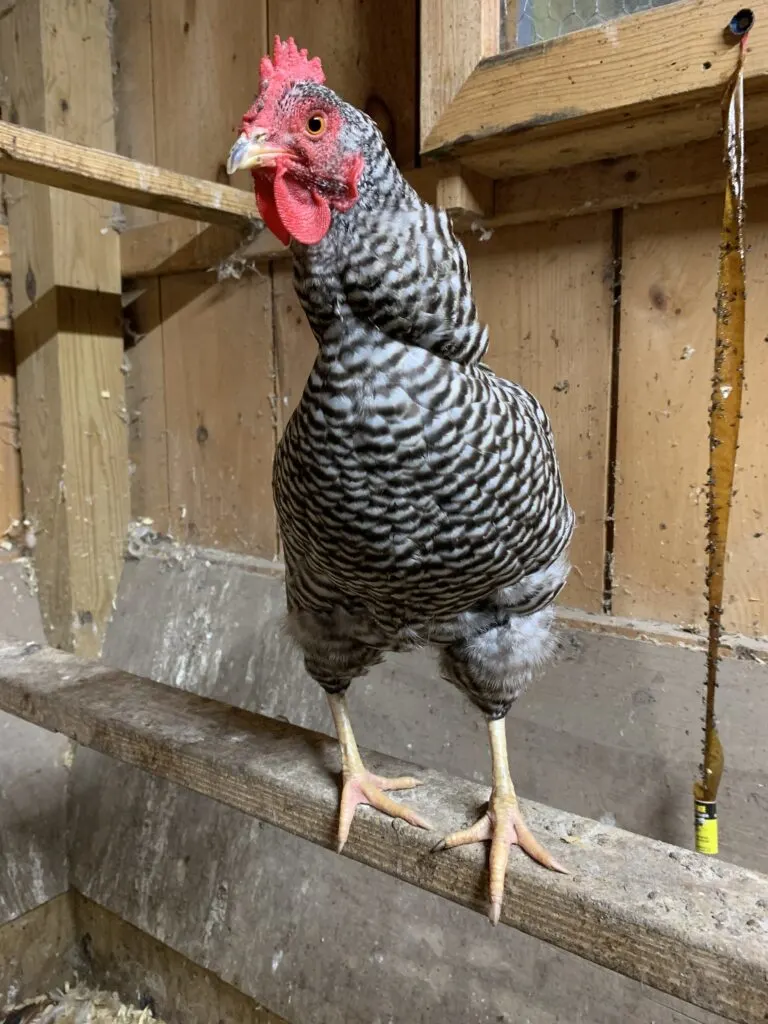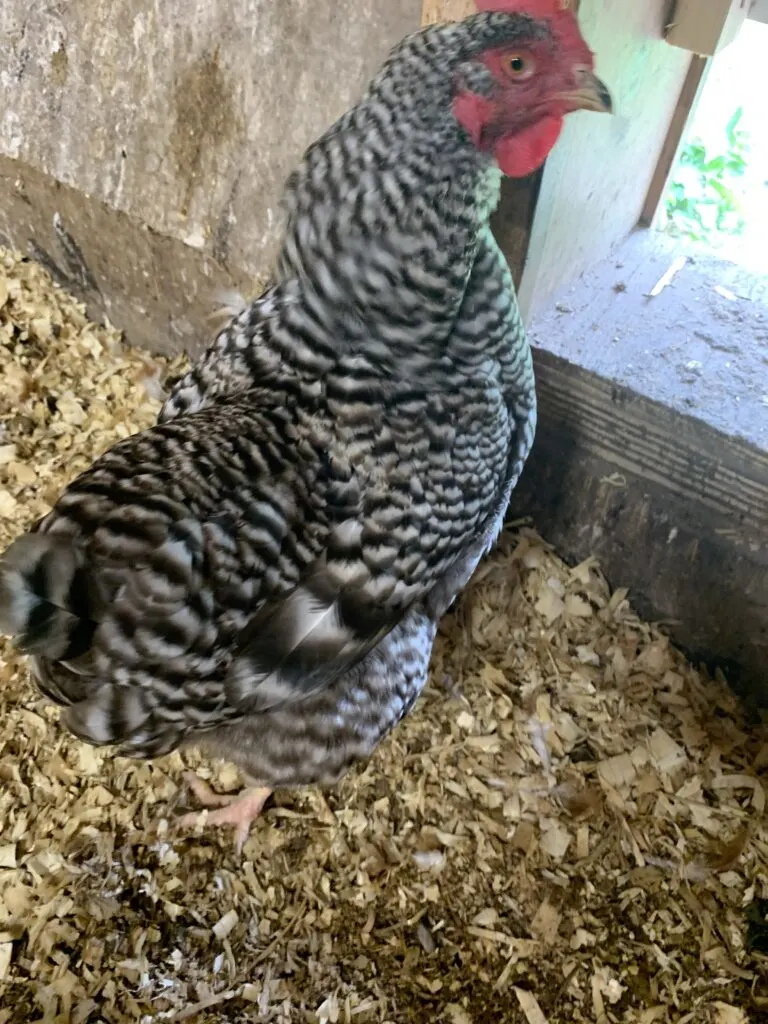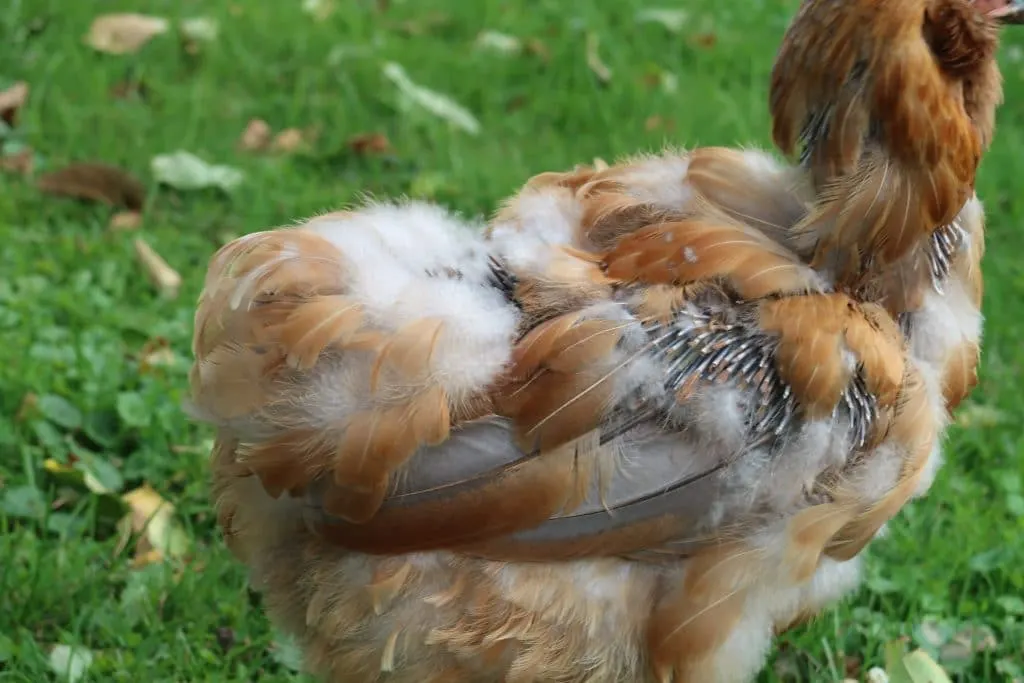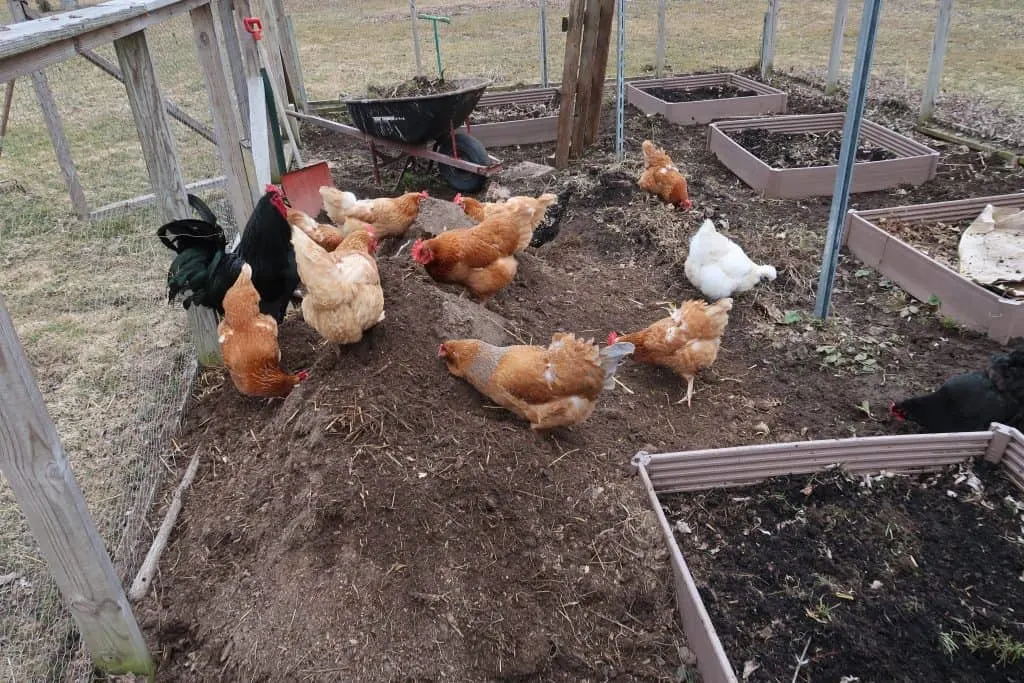Fall is a beautiful season, but it’s also when our flocks go through one of the most challenging phases in their feathered life: molting. If you’re raising backyard chickens, you might have noticed that your hens have pin feathers and are hiding in the coop more than usual.
Molting is a natural process that all chickens go through to grow new feathers and prepare for the winter, but it can be stressful for them and for us chicken owners.
In this post, we’ll share tips and tricks to help you and your flocks survive the molting period with less stress and more feathered friends.

Understand the Molting Chickens
Molting can happen at any time of the year, but it’s most common in the fall when daylight hours get shorter. Molting can last a few weeks to several months, depending on your chickens’ age, breed, and health.
I’ve always found our Rhode Island reds have the most pin feathers and look the worst out of the other breeds we raise.
During molting, chickens stop laying eggs and spend more time preening, napping, and eating. It’s essential to give them time and space to rest and recover while growing those new feathers and not to disturb them too much.
The whole process takes about eight weeks, sometimes closer to ten weeks. Depending on your breed, it can be as short as four weeks. Chickens won’t lose all their feathers, but some birds will lose more than others.
I’ve read that while all her feathers are growing and pin feathers, it’s sensitive and more painful to touch your chickens. I haven’t noticed this for sure with our new birds, but it makes sense it would be sensitive.

When Do Chickens Molt?
Molting is a natural phenomenon experienced by hens, causing them to temporarily cease egg production and shed their feathers, only to grow new feathers afterward. Based on your location, the onset of chicken molting can vary from early August to late November.
It is worth noting that most backyard chicken owners will observe their hens going through this transitional phase during September and October. By understanding the molting period, you can better care for your backyard chickens during this time.

Feed Them High-Protein Chicken Feed
What is a molting chicken’s diet? Since feathers are made of protein, providing your flocks with high-quality, high-protein feed during molting is essential.
You can offer them a complete feed in crumbles or pellets with at least 16% protein or add some extra protein-rich treats to their diet, such as mealworms, black oil sunflower seeds, or tuna fish. Scrambled eggs are another easy one to add if your chickens are still laying eggs.
I like to use pellet layer feed because it’s less waste. Once the crumbles get too dusty, the chickens won’t eat it.
To help speed up your chicken’s molting process, offer higher protein feed that is 18% protein and higher. These days, local farm stores sell chicken feed specially for chicken molting.
The only high-protein treats I give my chickens during molting is the black sunflower seeds. I don’t want to rush the time chickens molt, but we have enough that they tend to span out egg laying, so we always have a couple of eggs coming daily.
Even if the chickens spill the pellets on the ground, ours always seem to eat them up, or maybe it’s the mice!
Make sure they have plenty of clean water available, as well, to help them stay hydrated and healthy. I love adding apple cider vinegar to all my chickens and livestock water in the fall and spring.
I only add a teaspoon for a two-gallon water for my chickens. Make sure you pick up the good stuff for apple cider vinegar. You want to see chunks in it.
I grab the Vermont Village Apple Cider vinegar two-pack at BJ’s for $9.99. Amazon also has it for a lot more money. If you aren’t a BJs member and want to join, there is a $20 membership deal here.

This is our Barred Rock hen, Julia, and you can see she is starting her molt, or what others call a soft molt. I can always tell by looking at their neck and on their legs to see how the soft feathers are coming out.

When Do Chickens Stop Laying Eggs
Most of the time, your chickens have stopped laying eggs because it’s a molting season. Sometimes it is if they are sick or it’s freezing and less light. For more reasons why your chicken may not be laying eggs read this.

Keep Them Warm and Comfy
Molting can make chickens feel cold and vulnerable, especially if they’ve lost most of their feathers. To help them feel more comfortable, add some clean and fluffy bedding to their coop, such as straw, pine shavings, or shredded leaves, to insulate them from the cold ground.
You can also hang some curtains or tarps to block drafts and retain heat to help your chickens stay warm in winter, but make sure they still have plenty of fresh air and light.
Your backyard chickens should have a roosting area inside their coop. It’s helpful to have different heights.
No chickens do not need chicken sweaters. Are they absolutely adorable? Sure are. Would you be supporting a local business?
Sure would. If you have a chicken sweater, use it only for a small amount of time when you can keep a close eye on your chicken.
My only experience with this was when we had an injured chicken; her back lost a lot of feathers from a rough rooster. I purchased a chicken apron, and she ended up dying with it on. It got caught, and things didn’t go well when we were not home. She could have been sick, too, but I wasn’t a fan of the aprons.

Provide Them with Dust Baths
Dust baths are fun, relaxing for chickens, and crucial for their feather health. Dusting helps them clean and dry their feathers, remove mites and lice, and spread protective oils on their skin.
If you don’t have a designated dust bath area in your run, you can make one by filling a large container or section of the run with sand, dry dirt, or wood ash.
Add diatomaceous earth (DE) or herbs like lavender or chamomile for extra cleansing and insect-repelling properties. I sprinkle baking soda before I add it over the bedding or new sand.
If you pasture raise your chickens, most chickens will find a nice spot, usually in your garden or your walkway, and dig up a big hole.

This is one of our Easter Eggers during her first molting season.
Pin Feathers
Remember that during molting, your chickens will lose feathers while new feathers grow. I try to remove the old feathers before cleaning the coop.
Feathers are not the best for your compost pile. A few feathers won’t hurt, but they take a lot longer to break down.

Backyard Flock Owners Remember to be Patient
Molting can be a stressful and anxious time for chickens and us. It’s essential to be patient, understanding, and caring toward your flocks during this phase and not rush them or push them to egg production too soon.
It’s also essential to monitor their health and behavior regularly and to seek help from a vet or a more experienced chicken keeper if you notice any alarming symptoms or signs of illness.
Molting is a challenging but necessary phase in every chicken’s life, and as chicken keepers, it’s our responsibility to help our flocks through it with care, patience, and compassion.
By understanding the molting process, providing high-protein food, warm and comfy housing, dust baths, and TLC, we can help our flocks renew their feathers and prepare for winter safely and stress-free. As always, happy chicken keeping!
